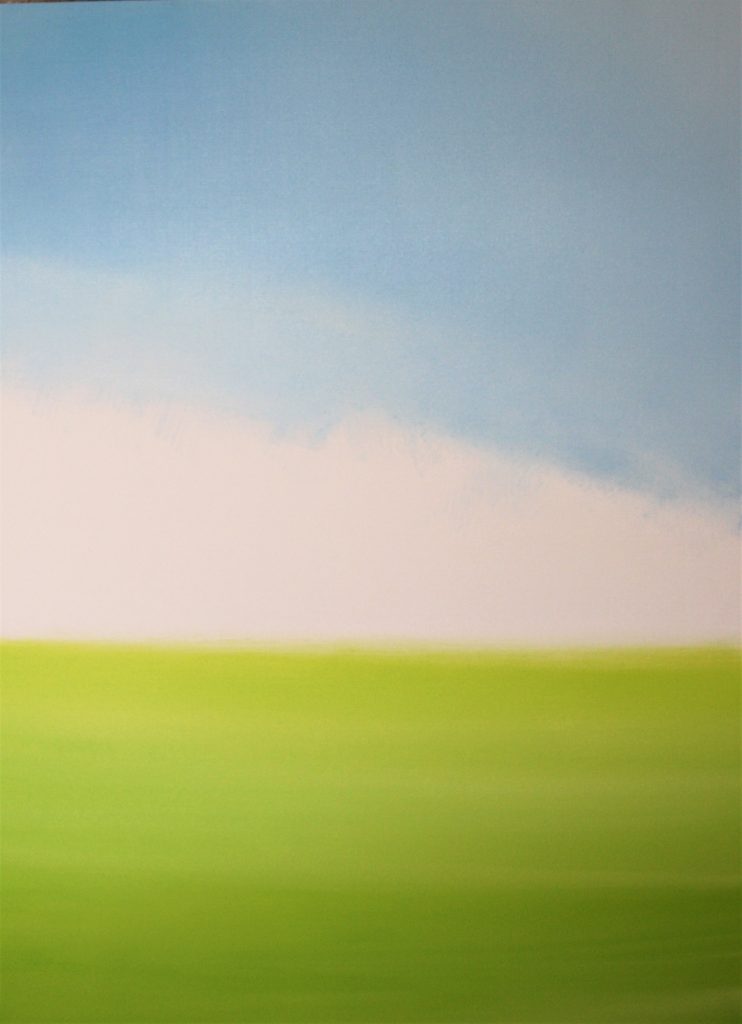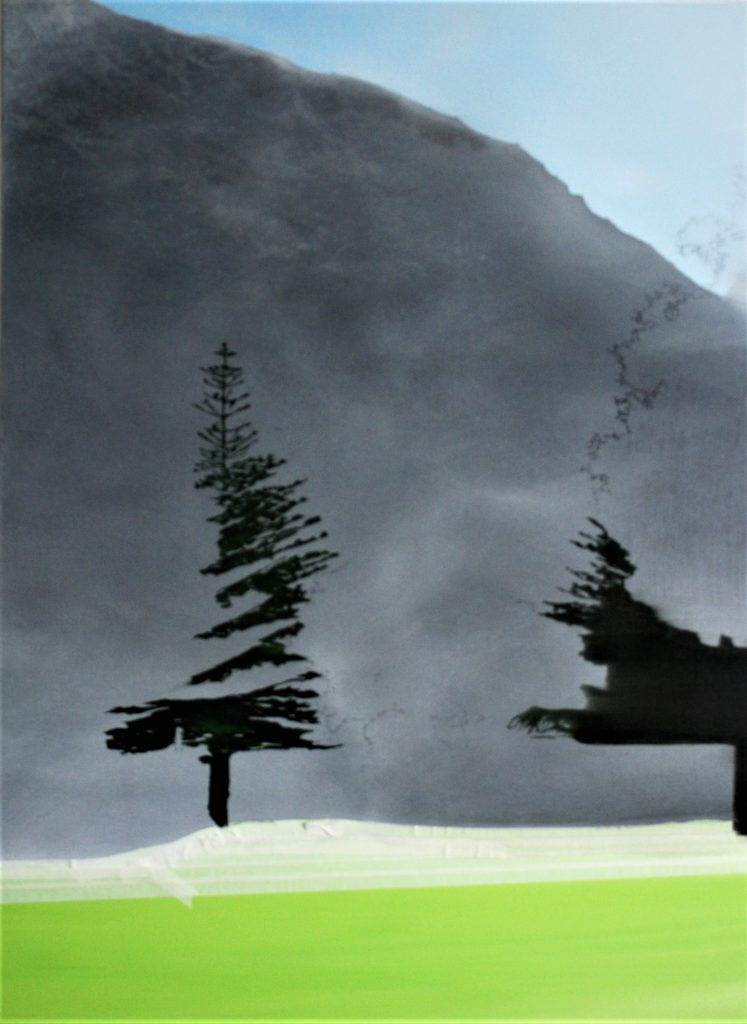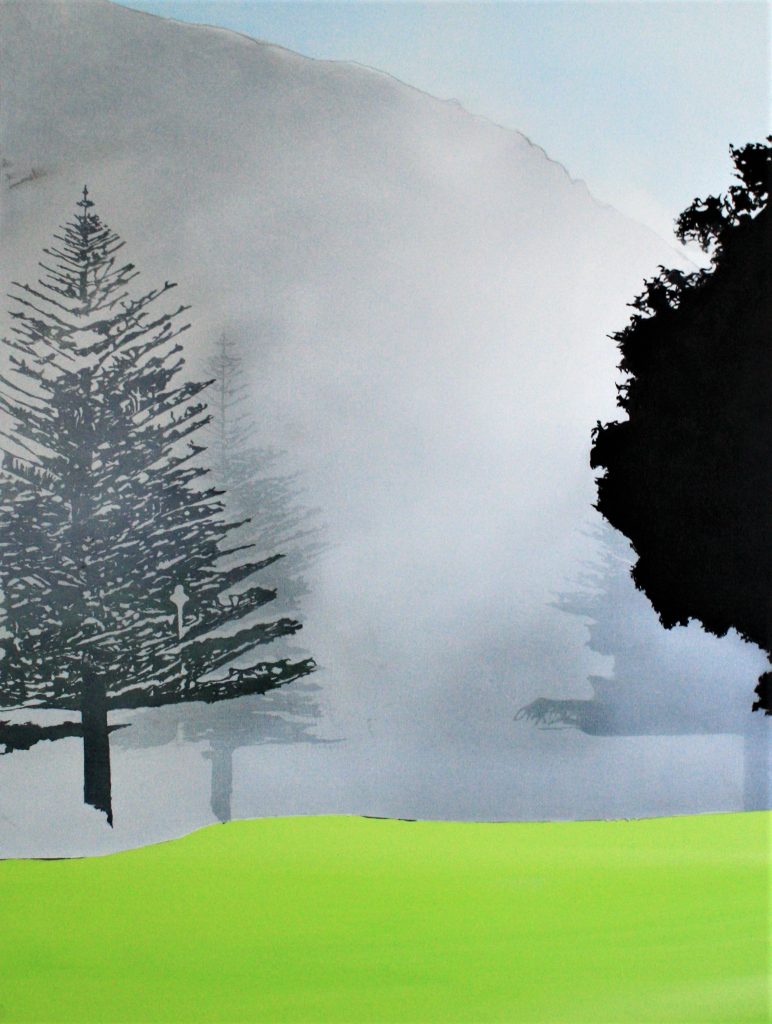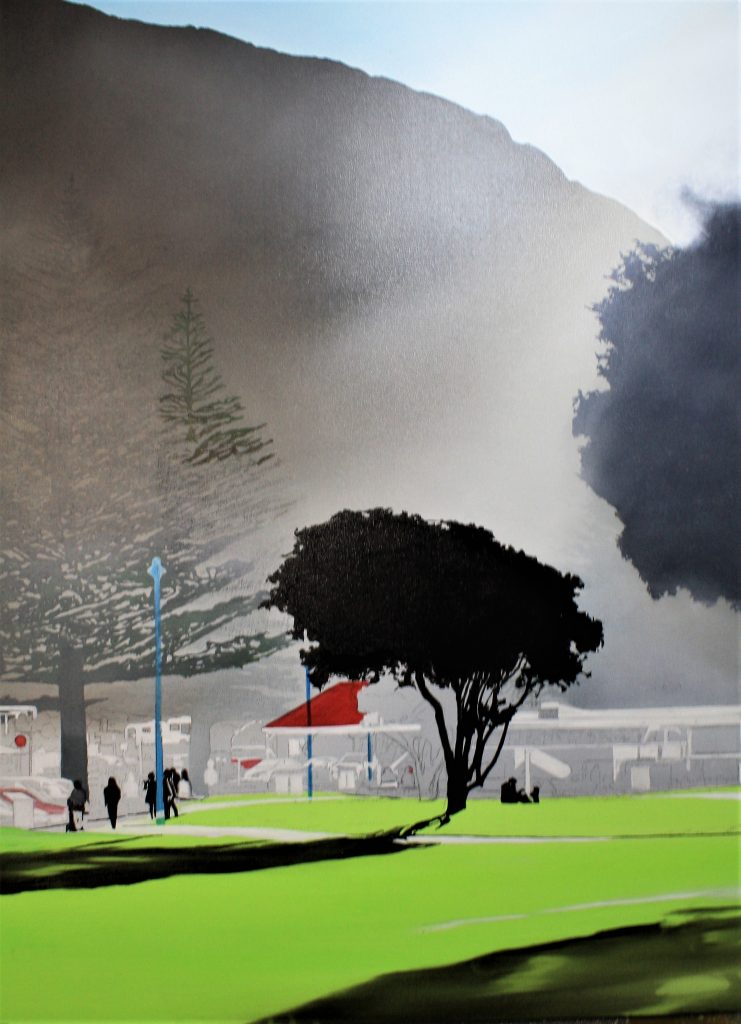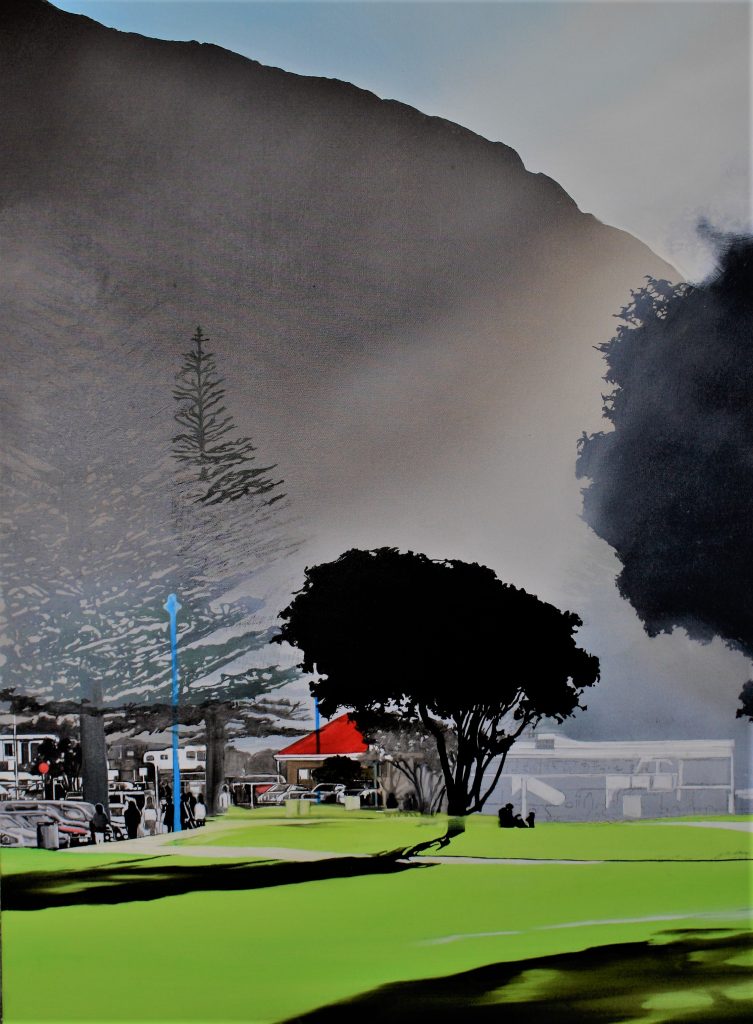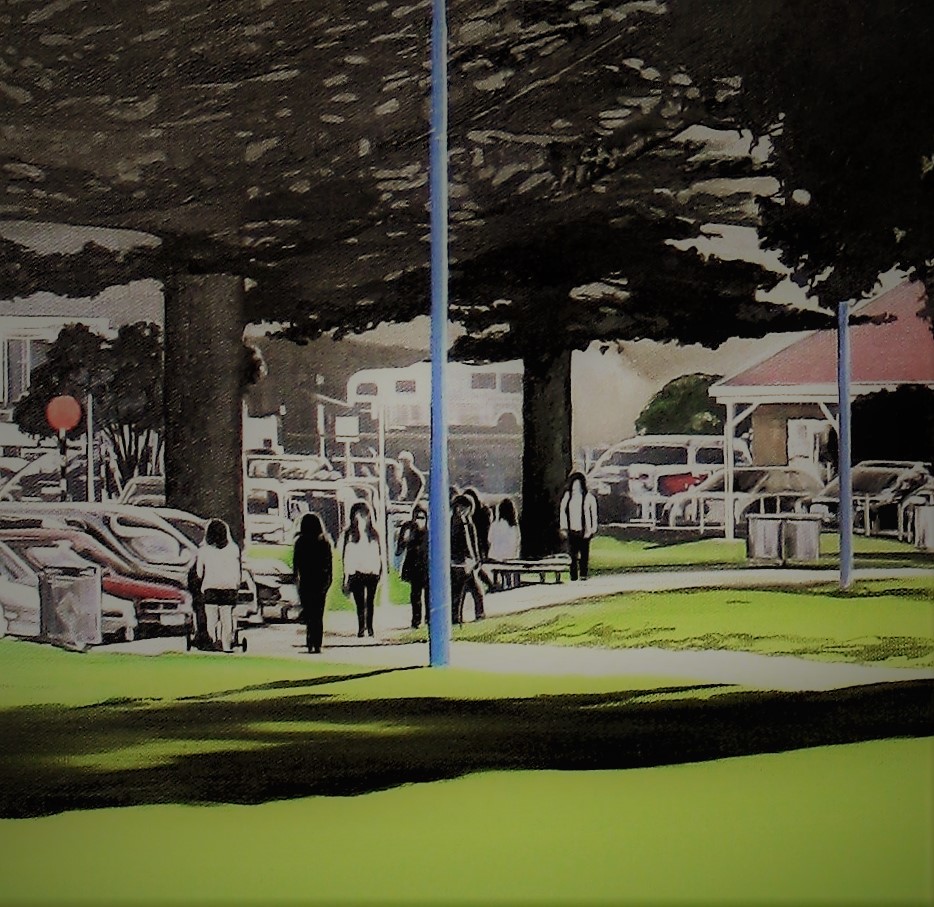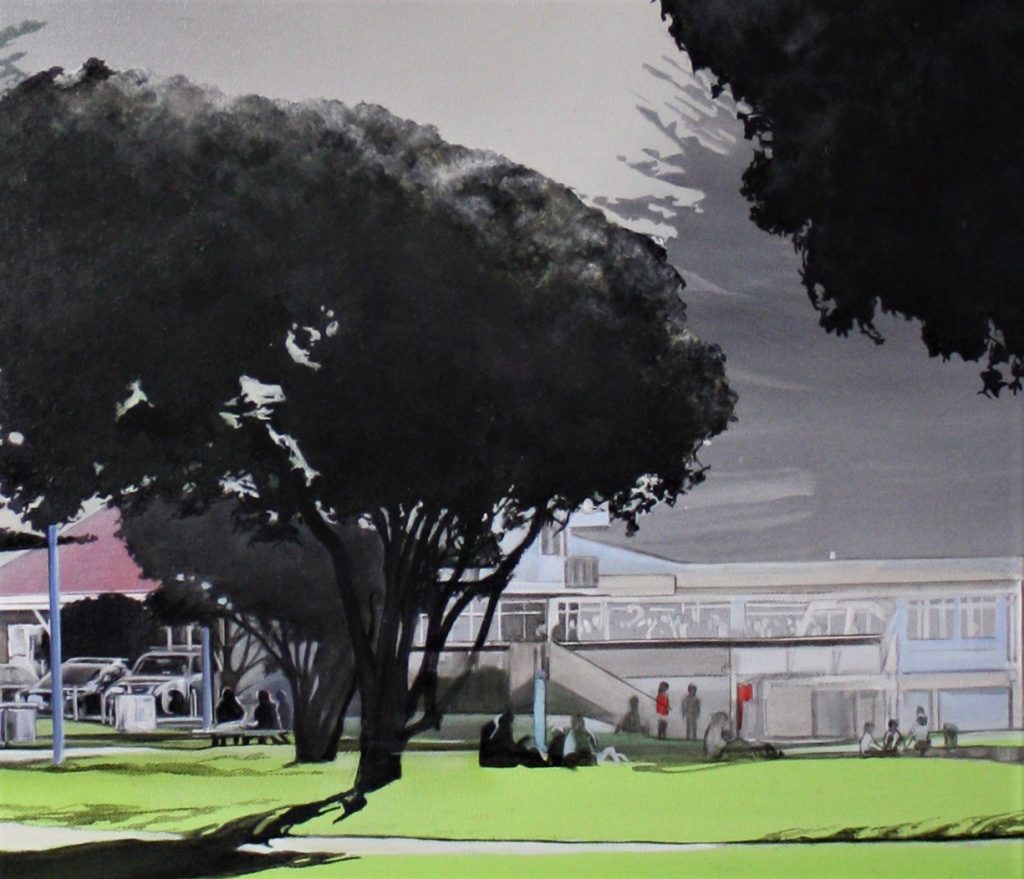These artist’s notes are copyright to Graham Baker and may not be shared or copied without permission. Any enquiries, please email to grahambaker@gmail.com.
Oil painting on canvas. 40”x 30” inches. 100cm x 75cm.
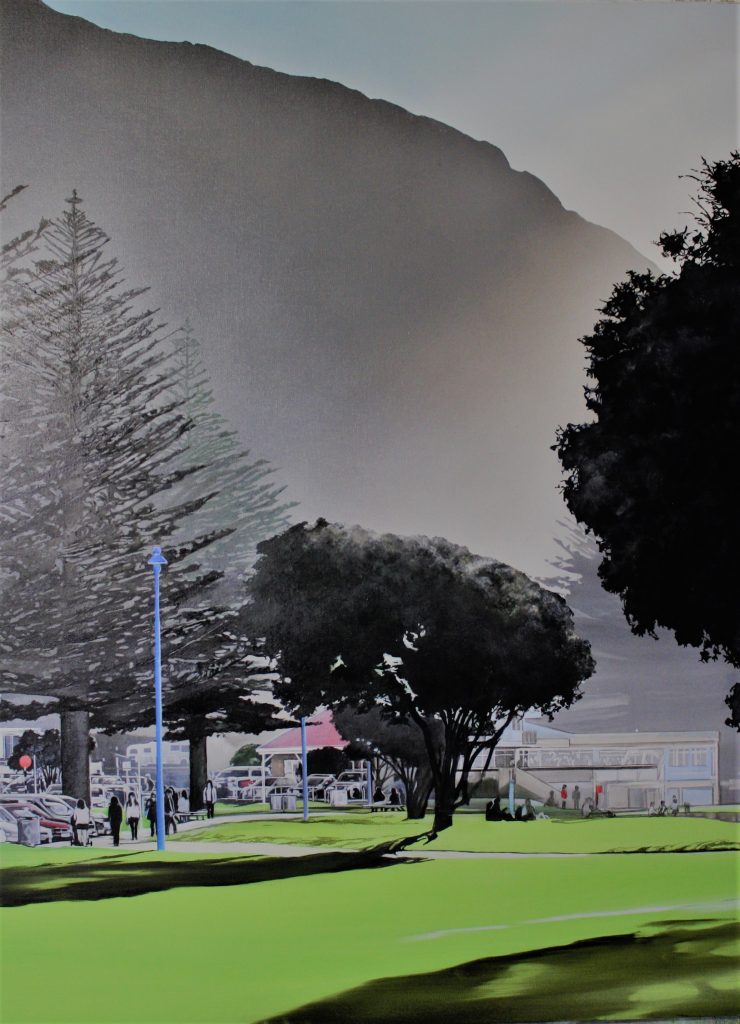
I drew my layout on paper. The same size as the canvas. When I turned off the projector all the essential lines and shapes for all the necessary elements were there, but very sketchy and a little distorted. It is always a bit disappointing using an overhead projector, perhaps we expect a perfect layout ready to go. It took quite some time to redraw everything neatly.
Next to prepare the paper layout so I could transfer the copy to the canvas I stuck the paper to a window with plenty of sunlight coming through. Facing outside. I went over the image carefully on the reverse side with a sharp charcoal pencil.
I then positioned the layout onto the canvas. charcoal side face down and rubbed the front with a pencil. I also placed in some lay marks so I could return the paper layout to the exact same spot after each tonal wash to reinstate the layout for the next layer. This is a good idea anytime we are painting and lose some of the initial layout.
I painted the background shapes first. When it was dry applied the first grey wash of mist over the entire canvas. Repeating the process for the next layer of elements, building up saturation as I went along. I painted every element accurately and completely. There would be no going back to make corrections, particularly as each layer varied as the colours built up.
This process of soft tonal changes would help to create depth of field and perspective particularly for the trees. Most of the work was in the Norfolk Pines.
Tone: Simply the lightness or darkness of a colour.
The sea mist was done with a large soft brush. I kept to my standard oil mix, preferring less pigment rather than use thinners to achieve the very translucent mix, for the integrity of the paint film. All would be lost if each layer wasn’t dry before the next coat was applied.
Soft blues and greens ( cool colours ) and grey mist around the mountain ( moisture in the air ) along with the angle of the sun, all helped to create a sense of tranquility. That is what I wanted to reproduce.
Layering is building up contrasts of tone & depth over the background colour by means of overpainting. The same effect can be achieved with texture, size, colour shapes and more.
Artists use transparent painting techniques such as glazing and colour washes to achieve colour depth (multiple layers of translucent or transparent colour that give the illusion of three dimensions and luminescence, areas of light showing through the paint).
A transparent painting usually has some faded images in the background. The viewer will notice the main image or subject and the faded images or light coloured images behind.
This painting was an excellent example of layering.
These artist’s notes are copyright to Graham Baker and may not be shared or copied without permission. Any enquiries, please email to grahambaker@gmail.com.
